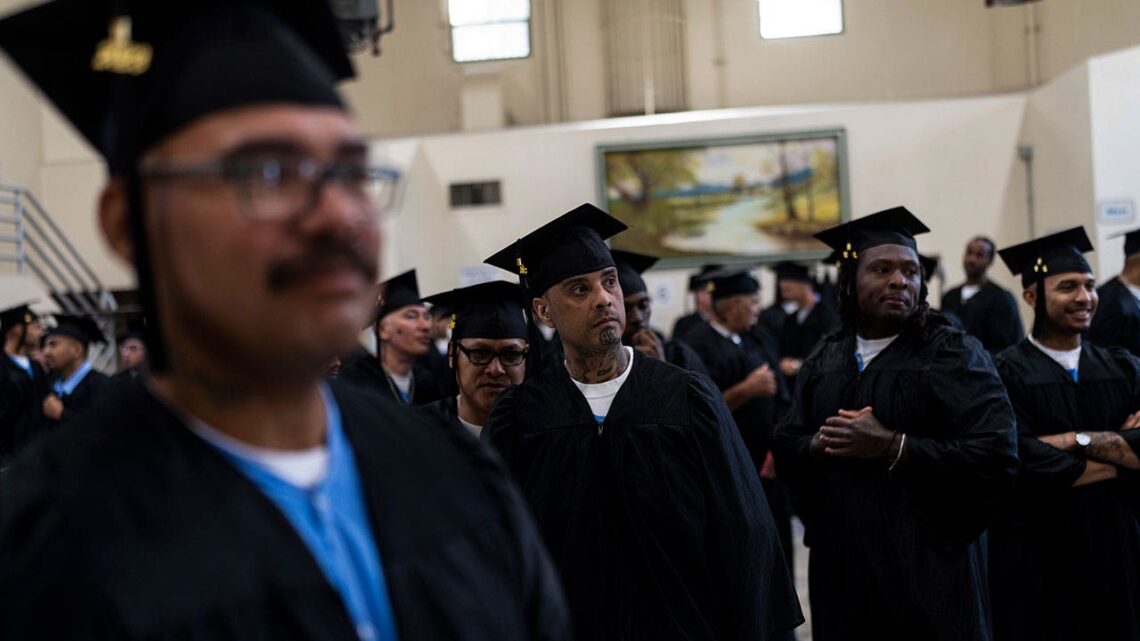- About 30,000 more prisoners will receive free college education starting next month.
- The prison education will be funded by the Pell Grant program which offers the neediest undergraduates tuition aid.
- While educating an inmate costs about $20,000, it costs roughly $106,000 a year to incarcerate someone in California.
The graduates lined up, brushing off their gowns and adjusting classmates’ tassels and stoles. As the graduation march played, the 85 men appeared to hoots and cheers from their families. They marched to the stage – one surrounded by barbed wire fence and constructed by fellow prisoners.
For these were no ordinary graduates. Their black commencement garb almost hid their aqua and navy-blue prison uniforms as they received college degrees, high school diplomas and vocational certificates earned while they served time.
Thousands of prisoners throughout the United States get their college degrees behind bars, most of them paid for by the federal Pell Grant program, which offers the neediest undergraduates tuition aid that they don’t have to repay.
That program is about to expand exponentially next month, giving about 30,000 more students behind bars some $130 million in financial aid per year.
The new rules, which overturn a 1994 ban on Pell Grants for prisoners, begin to address decades of policy during the “tough on crime” 1970s-2000 that brought about mass incarceration and stark racial disparities in the nation’s 1.9 million prison population.
For prisoners who get their college degrees, including those at Folsom State Prison who got grants during an experimental period that started in 2016, it can be the difference between walking free with a life ahead and ending up back behind bars. Finding a job is difficult with a criminal conviction, and a college degree is an advantage former prisoners desperately need.
Gerald Massey, one of 11 Folsom students graduating with a degree from the California State University at Sacramento, has served nine years…
Read the full article here







